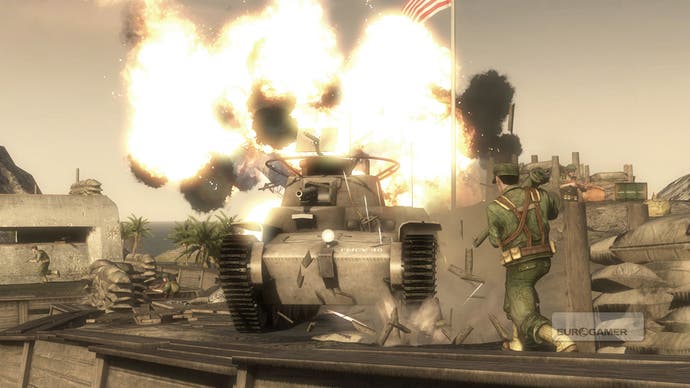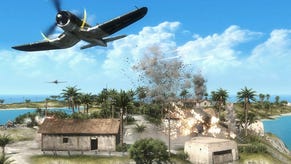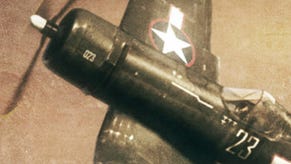Battlefield 1943
Splatters from Iwo Jima.
Never mind Bad Company - welcome to Dimwit Company. Nobody's talking to one another - hardly surprising, since the guys to either side of me are Italian, French and Spanish - and once the landing craft hit the beach, we've all regressed by about seven years. Italy's landed a biplane upside down on an anti-aircraft gun, and I'm stuck fast in a trench. In a tank.
Battlefield 1943 may be simplified - three maps, three classes, one objective - but the key word is accessibility, not casual. There's a tutorial this time - the first in the series, rather unbelievably - that introduces you to the concepts offline and then lets you practice in planes and tanks unmolested by hostiles. There are facilities for private matches, clans and squads, and there are levelling and reward systems (Achievements/Trophies and a broader range of honours beyond that, although no unlocks), but for the majority of people approaching the game from scratch, it's a one-click process to start playing, and it's not difficult to understand what's going on. You pick an infantryman, rifleman or scout class and then choose where to spawn. But it's still Battlefield, and it still punishes you for pratting around.
There are five control points on each map, like the one we're seeing today - Iwo Jima, after last month's reintroduction to Wake Island - and the European press gathered at DICE's wind-battered Stockholm headquarters have more difficulty negotiating the keycard door to the balcony than they do contesting the territory on the second map's thin, turbulent sliver of Ogasawara. Fighting seesaws between an airstrip at one end through trenches and over grassy hills past a lighthouse to higher ground at the other, and while all the vehicles are present and correct, it's an infantry war; automatic weapons, bazookas, sniper rifles, pistols and - gloriously - katanas doing the best of the killing.

Yet there really is a lot to it, just as there should be, and it's been tweaked smartly. Snipers blink - a well-judged stab of disorientation - into their telescopic sights and trace anyone daft enough to wander around out of cover; bazookas eviscerate the arrogant tanks; and the new bomber wings are repelled by anti-aircraft fire (another clever bit of balancing - rather than an unavoidable artillery strike, when a bombing run is called in from a special shack the team in the crosshairs now has a slim chance of repelling the onslaught).
DICE has played around with these maps, despite their heritage, and the results appeal to old and new. Senior producer Patrick Liu tells me that the small team deliberately reorganised them symmetrically. "Wake Island used to be one team defending the island and the other team attacking it. Now we've made it so there are two carriers and both teams are attacking the island, just to make things fair. Otherwise, for a total newb, it's extremely hard to get into asymmetric gameplay."
There's also a squad command system, similar to Battlefield: Bad Company. Commands are context-sensitive, so if you're staring at an enemy flag and issue an instruction, your comrades are told to attack; if you're staring at your own flag, they're told to defend. You can also spawn next to anyone else in the squad, rather than just the squad leader, so if he's a sniper hiding out in the distance, you can pick someone closer to the action and materialise there.






